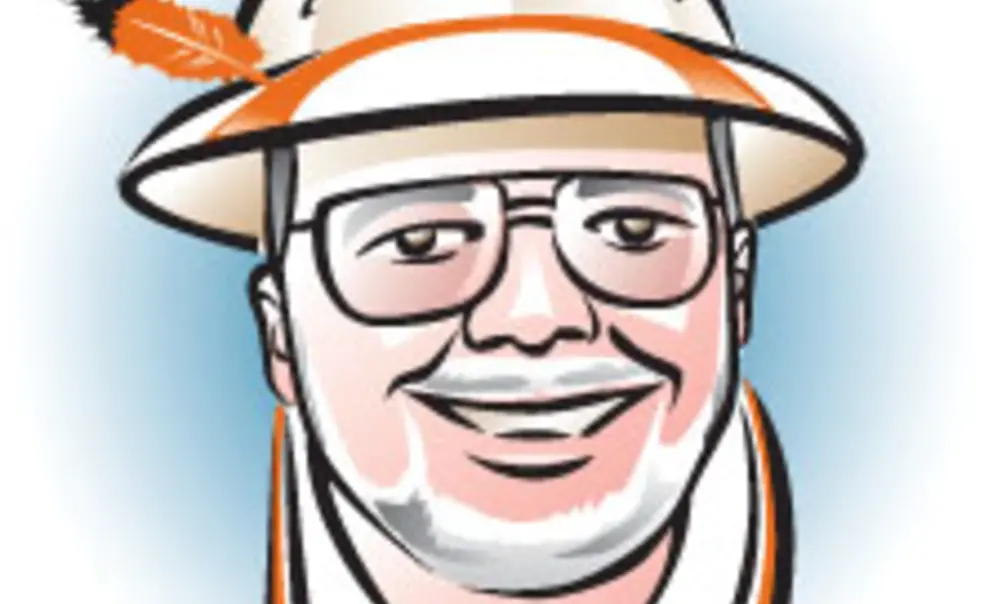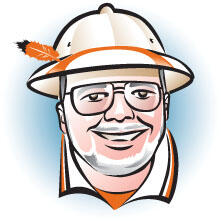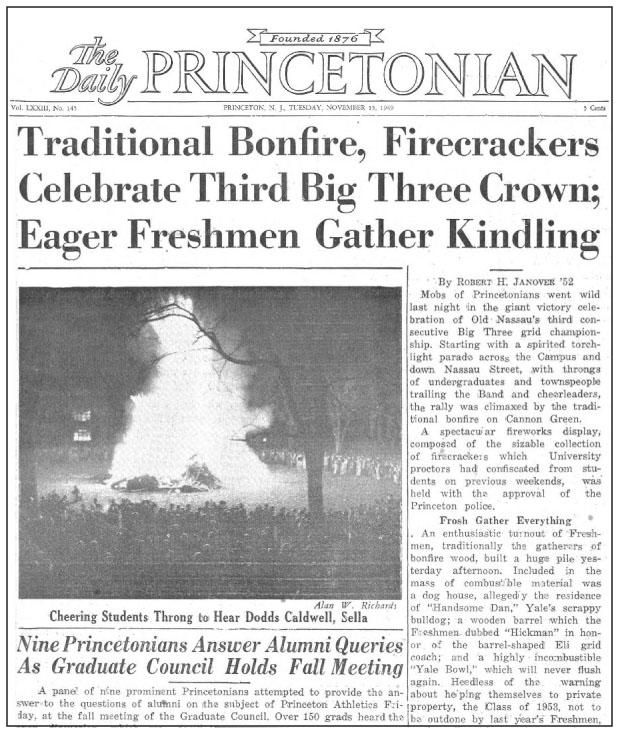As you peruse the various recollections of 2011 Reunions here in our valedictory edition of the year, it’s always fun to think about the things that remain the same over the decades, but of course there necessarily are things that change, too. The very nature of Reunions has morphed from an off-campus (tipsy) pre-Commencement boys’ bash to an on-campus (tipsy) pre-Commencement boys’ bash to an on-campus (tipsy) pre-Commencement couples’ bash with topical speakers to an on-campus (tipsy) pre-Commencement families’ bash with topical speakers, fireworks, and … well, you get the (tipsy) drill.
One of the more substantial additions over the years has been the community-service projects run more or less in conjunction with Reunions by the major classes. The spiritual descendent of Princeton Project 55 (now Princeton AlumniCorps), the groundbreaking alumni-service program begun in 1989 when the Great Class of ’55 hit 55 years old, the various initiatives often involve building houses, supporting food kitchens, supplying and supervising internships – just about any not-for-profit-based activity you can conjure up. The whole approach became more formalized as the Alumni Council formed a service initiative in conjunction with Princeton’s 250th in 1996, and then added a standing committee on community service, which acts a clearinghouse for the ideas of the classes and regions. By now, essentially every major has some service activity or another going either during its reunion year or perpetually, with new wrinkles each five years.
Which is dandy and very much Princeton in the nation’s service and in the service of all nations, but still, when your class reaches 80 years old or so, there are practical limitations to what you want to undertake. Reading a carpenter’s level with bifocals slows down the hammer and nails bit, institutional cooking demands some heavy lifting (not to mention these days a recipe for 50 pounds of tofu, the very thought of which depresses me), retirements limit access to internships: The options are limited.
They’re also serious about their history. For their 50th reunion 10 years ago, the class not only executed a fine example of the usual extensive hardbound class book, with undergrad reminiscences and current data on each classmate, but a completely separate volume of essays on the historic events of the prior 50 years and the involvement of classmates in them. Born in 1929 on the cusp of Depression, 12 years old at Pearl Harbor, 78 percent served in the Armed Forces and 54 percent in Korea; they knew it was important, and they got it down on paper.
But even they are north of 80 now. In 2006, for their reunion service project they collected books for schools, as a number of classes have done successfully over the years, but it left a bit of the Peggy Lee “Is that All There Is?” feeling. The clean-out-the-attic facet, however, seemed practical, so when in conversation a board member of the Princeton Historical Society said to reunion chairman Charlie Ganoe ’51, “Why don’t you collect memorabilia for us, then?” the neon sign lit up.
The Princeton (town) Historical Society, which collects unique documents and artifacts related to the local area and its history, including such folks as George Washington, Paul Robeson, and Albert Einstein.
Morven Museum and Gardens, which is dedicated to the colonial history of New Jersey and the Stocktons’ house, and the governors who inhabited it in the 20th century.
The Princeton University Archives, always lusting after individual documents (photos, letters, exam papers etc.) documenting the institution’s past.
The Princeton athletic department archives, always on the lookout for old – oops, make that historic – trophies and uniforms, scorecards and movies.
Princeton browsing libraries, a series of pocket libraries set up by the Princetoniana Committee in the colleges, Frist, and the Grad College to document Princeton’s history and traditions to the young, impressionable, innocent scholars.
If you think for a moment, you realize these fall into sort of a hierarchy – with (for example) the archives’ unneeded 10th copy of This Side of Paradise the perfect inclusion for a browsing library – so the chances of digging up worthwhile materials from the class attics is seriously enhanced. And the careful superstructure put on the project, from the 12-page set of guidelines to the painstaking process by which everything, including all donor contact, goes through coordinator Ruth Wilson s’51, adds the gravitas to convince classmates they can part with their treasures with confidence.
The proceeds already are streaming in: a class blazer from 1911, complete with a 50th-reunion button and hatband; a 1915 class banner (that can be used by great-grandchild Class of 2015 in next fall’s Pre-rade!); a custom-made Big Three championship banner from ’47-’48-’49 (meaning, of course, it was made in 1950 before the next one); the wonderful football memorabilia collection of terrorizing defensive tackle Hollie Donan ’51; papers and photos related to James Robinson, a Princeton athletic trainer from the end of the 19th century; and perhaps the most fun of all, Princeton Charlie’s megaphone. Throughout the ’50s, Charlie was not only the abstract stereotype of the laid-back Ivy Leaguer, he was a character who was tricked out at football games in a raccoon coat, flask, and Princeton megaphone; the last is on its way to the athletics department (the archives, interestingly, already has Jimmy Stewart ’32’s from his time as a cheerleader). More is bubbling to the surface as we speak, and even more doubtless will follow from the class in its own good time (I certainly can’t criticize – I’d need a National Guard permit to use the blasting caps necessary to dislodge the bulk of my own storage room).
Just as important, Project ’51 is a wildly effective blueprint for a highly valuable service project that can be undertaken by those well into retirement years – indeed, the older you are, the more valuable the potential payoff. Should it become a dependable standard for reunions beyond 50 years out, it wouldn’t be any great surprise.
So here’s a locomotive for the Great Class of ’51 and its historic advance in collecting and preservation. We here in Virtual Princeton are just dying to see it on a DVD.
Life is ephemeral here in the Digital Habitat, so I fret about audience distraction (not to mention dozing) over our longest break here during the summer; even my mom seems to gravitate toward Mad Men repeats and such. So in case you got distracted and missed some of our screenside chats over the last academic year, here are links to the other 2010-11 Rally columns to keep the orange cell count in your blood work in balance:
The Ol’ Pendulum Effect in History
The New DuPraz Daily Princetonian Online Archive
Football: Changing the “Program”
A Holiday Present from Fred Fox ’39
A Princetonian’s View of the World
Eating Club Reform: What, Again?
Betty Constable and the Birth of Women’s Sports
Engineering in a Liberal Arts College
The First Woman’s Honorary Degree
The Class of 1945’s Memorial and Chronicle
And as an extra-added planning tool for next Reunions (from our humor issue)
Have a great summer; don’t spare the sunscreen on your iPad!















No responses yet